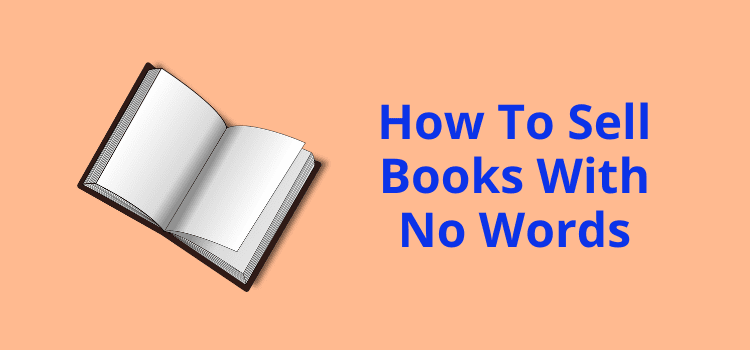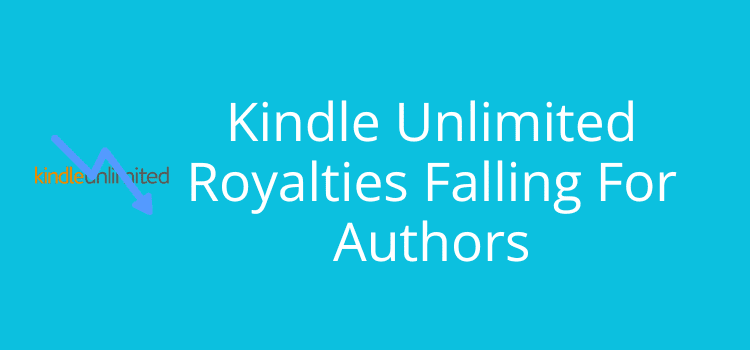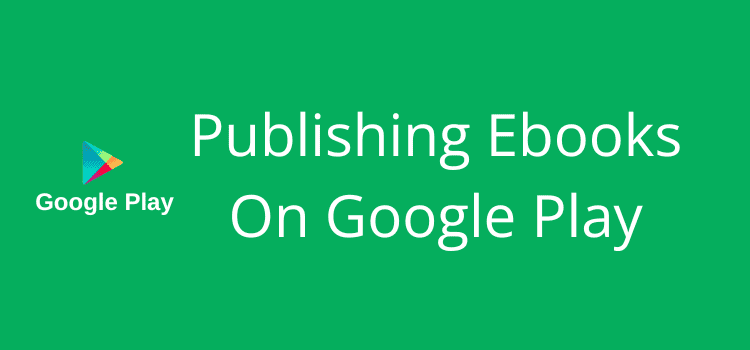
Can you imagine that there is a lucrative market for books with no words?
Well, in fact, a wordless picture book or even a book of blank pages can earn far more than you are making from your fiction book of 100,000 words.
If you are a self-publishing author, it is easy to forget that Amazon sells a lot of products apart from books.
Listing your books for sale is only a tiny part of what Amazon sells. It sells everything from home-delivered groceries to complex security installations.
How do books with no words make money?
For people who understand how Amazon works, planning to sell a book is the same as planning to sell a camping tent.
They have a totally reverse logic to an author.
An author writes a book and then hopes people will buy it.
An experienced Amazon marketer will research what people want to read and buy and then write it.
There are plenty of buyers for low-content books such as personal journals, picture books, coloring books, and diaries.
It is very easy to produce print-on-demand books to satisfy these buyers.
If you set the price right and find the right book listings, selling blank books on Amazon can be a winner.
Writing a book you want to sell and then publishing and listing it on Amazon is the antithesis of clever marketing.
Do you want to start selling your books on Amazon?
Then maybe you should look at how some non-authors are succeeding by finding out what people want to buy first.
From keywords to bestsellers

Self-publishing authors can learn a lot from Amazon marketers who sell books on Amazon without writing.
I stumbled on an article on Money.com, “Amazon Sellers Are Self-Publishing ‘Blank’ Books — and Turning a Big Profit.”
There are a lot of tips in it from self-publishers that can help new authors.
Here are a few interesting quotes I selected from the article that explain how to sell blank books on Amazon.
The two key success factors for all the authors mentioned in the article are niches and search keywords.
Experts find niches by doing extensive keyword research, which often begins on Amazon itself. Sellers will pull up the website, type in the word “journal” plus a descriptor, and see what sorts of suggestions automatically pop up. From there, they’ll try to drill down on a target, like “chicken coops,” “magic tricks,” or “volleyball.”
The other commonality is that they don’t write (prepare) any book until they know that there are people who will buy it.
According to Rachel Harrison-Sund, the goal is “to create a book you know people are already searching for.”
“I’m not going to sit here and go, ‘I like gardening, so I’m going to create a gardening book’ and hope for the best,” she adds. “Do you know people are looking for books about gardening?”
The tools these experts use are not those of a fiction author.
Every day, Kelli Roberts wakes up by 5:30 a.m. and heads to the office: the living room of her 550-square-foot apartment in downtown Columbus, Ohio. With the help of tools like Photoshop, Keynote, and Publisher Rocket, she researches, creates, and uploads books to Amazon.
There is no mention of Microsoft Word or Scrivener.
They only use image and pro-level Amazon keyword research software.
Do these Amazon marketers make money?
Roberts now has 6,000 books under her belt. She makes a lot of gifts and work-humor-themed products because they sell particularly well. She’s also experimenting with puzzle books and mazes.
In December 2017 alone, she made $18,902 from KDP.
“You’re front-loading the work,” Harrison-Sund says. “Once that book is published, you’ve got a passive-income-generating asset as long as that book remains in demand and for sale.”
With roughly 800 books on Amazon, she earned about $140,000 last year.
Rob Cubbon, a 51-year-old Brit who lives in Chiang Mai, Thailand, earns up to $3,700 a month selling books without (many) words in them.
“I couldn’t believe that people would spend $6.99 on a hundred-paged blank paperback,” he says. “But they do.”
But he realizes Amazon could make everything disappear tomorrow without explanation. “Amazon’s a huge, great playground with a load of kids playing in it,” he says. “[But] it’s their playground, and they can tell you to go anytime.”
These authors are using Amazon KDP print-on-demand paperbacks to generate their incomes.
There is no investment needed and no stock to carry.
Using this method saves on shipping costs involved in individual seller accounts that use an Amazon fulfillment center.
They leave all the production and delivery to Amazon and pocket a 60% royalty for all the books that they sell on Amazon.
The number of words, or the lack of them, in these books is not an issue.
It is still a book, and people buy these books.
The important lesson to learn is that publishing any book without doing any market research first is not a recipe for success.
You should think about applying the same principles that these wordless book authors use.
Never start a new book project until you know that there are potential and willing buyers.
It is a process that many fiction authors, especially successful romance authors, have employed for a long time.
If you are an author and you are not familiar with Amazon search keywords and how they work, you should start working on it.
Keywords are the most powerful tool you have at your disposal to position your book where readers can find it.
It is much better to start this process before you write a book.
But if you have already published, you can improve your chances by researching better and more productive keywords and applying them to your book.
You can do your research for free using Amazon search to find search phrases.
But you will have much more success if you use software to access real-time book searches and sales data from Amazon.
As mentioned in the article I quoted, these marketers use Publisher Rocket to research search keywords and phrases.
Summary
Amazon sells all sorts of things, with books and KDP being only a small part.
But buyers are buyers of any product. The marketing involved in selling books successfully is no different from selling sleeping bags.
In both cases, you need to direct your marketing towards niches where these people look for sleeping bags or books.
Then you need to narrow it down to tiny sales niches like pure wool sleeping bags. Or for authors, rose pruning guidebooks or Victorian mystery romance.
The biggest mistake some new authors make is thinking that their book is for everyone.
The fact is that the market for most books, and fiction, in particular, is extremely small.
Potential success comes from finding this tiny market for a new book and then making it discoverable to those few hundred or few thousand people.
Related reading: How To Self-Publish Very Short Books In Print And Ebook




Hmm. I experimented with Journals or Notebooks for two of my interests last year, since Blurb, who I use for my paperbacks, was promoting them. I left them in the Blurb store, since they have a goodly number and obviously people who like pretty notebooks go there… but I bet more go to Amazon. The trouble is the hike in price necessary to put them into the distribution network. I think they are pricey enough for fewer than 100 pages.
Maybe I should get my spreadsheet out and work out the optimum size and price, or even swallow my pride and make them in KDP.
Well, Jemima, I suppose you will only know if you try! :)